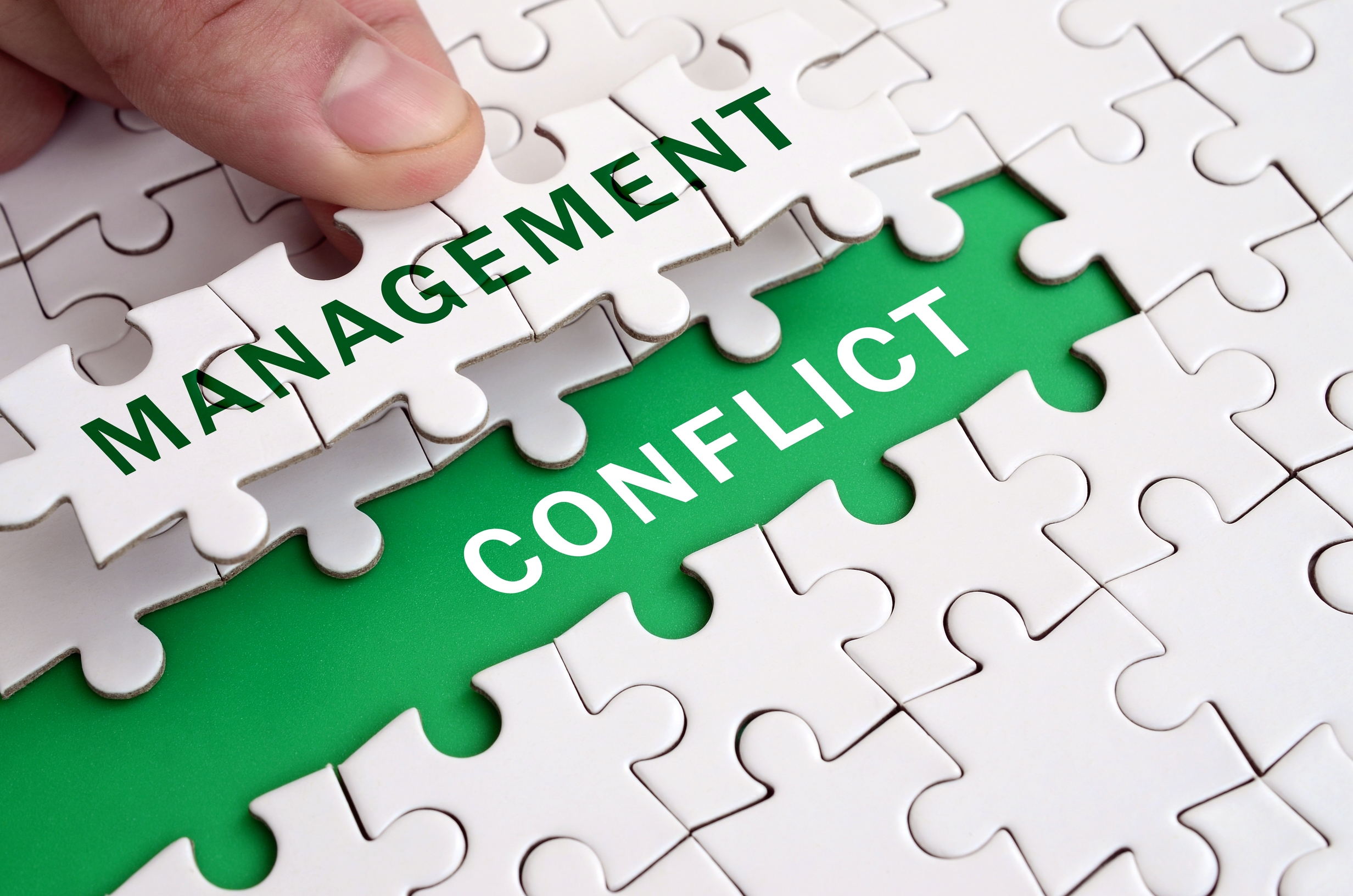What is conflict management?
Workplace conflict is a state of disagreement among employees. It arises because people have their own set of values, goals, needs, and interests that may clash with others. Conflict management is the process of reducing the impact of these conflicts and preventing them from escalating.
When you manage a conflict, you need to identify the underlying sources and take a course of action that works best to mitigate the situation.
While preventing conflict is nearly impossible, you can and should manage its effects.
5 Conflict management skills for managers
Managing conflict is tricky. It requires the ability to tackle issues head on, with a high degree of sensitivity and empathy. According to an article published by the Project Management Institute, managing conflict is a core competency of many leaders. This is no surprise—how you manage your team, especially when conflicts arise, will have a significant effect on the workplace environment and how the team works together moving forward.

Let’s take a look at 5 skills that’ll help develop your conflict management expertise:
- Communication skills
- Stress management
- Problem-solving
- Emotional intelligence
- Teamwork
Communication skills
Everyone can communicate. The ability to communicate effectively, however, is a skill only a few people master. You might be the most insightful, experienced, or skilled member of your team or department, but you’ll easily find yourself in conflict with coworkers if you can’t communicate effectively.
Communication can be broken down into 3 important buckets:
1. Listening
When we think about communication, the first thing that comes to mind is often talking. But in reality, effective communication starts with listening. You need to understand a problem if you hope to solve the issue. To be great at conflict management, try spending more time listening than you do speaking.
To do this, you need to create spaces where employees are comfortable speaking up. Ensure that effective communication channels are available to employees. There are many ways to communicate grievances in the office, such as:
- Instant messaging
- Gmail notes
- One-on-one meetings
Make sure employees are aware of how to best communicate their feedback, and are assured that their complaints will be kept confidential. It’s important to create a space where your employees feel safe coming to you with feedback. That way your employees will be comfortable addressing problems with you before they spiral into major issues. A great way to communicate this is to add a section into your Manager ReadME on the best time and place to communicate with you.
2. Body language
Body language is also a big part of communication. When employees approach you with a problem—specifically in person—be conscious of your body language. You want to look open and receptive when people are explaining a problem. Face the person you’re speaking with, consider your posture, and control your facial expressions. When you’re remote, put your camera on during video calls and make eye contact (sometimes looking directly at your camera helps)!

3. Moderating
When managing a conflict that involves more than one person, you may want to consider bringing everyone in the same room–whether virtually or in person. When moderating, consider governing by a set of rules aimed at maintaining psychological safety. By creating a set of rules, you send a clear signal that your workplace is a safe space for discussion and that everyone is free to speak what’s on their mind.
Aside from giving everyone the chance to speak, psychological safety also involves acknowledging that you might not be the best person to mediate a problem. If you have a difficult relationship with the people in conflict, try to identify a suitable person to mediate the issue to prevent a potential conflict of interest.
Stress management
According to a recent study, workplace stress costs the US $300 billion annually in lost productivity. It’s also no surprise that it can lead to conflict at work.
Stressed workers are generally more irritable and high-strung. As a result, stress can cause simple disagreements to erupt into a full-blown conflict.
Does your workplace or team breed a culture of stress? Everyone’s under tight deadlines and it’s important to reach your company and team goals. But, pushing people too hard is often counterproductive. As a manager, you also need to watch out for signs of burnout among employees and act swiftly on them.
Here are some ways you can manage team stress and ensure that your employees stay sharp and motivated.:
- Offer well-timed breaks
- Push soft deadlines when needed
- Encourage people to take their vacation time (and lead by example by taking vacation yourself)
- Offer health and wellness benefits like gym membership and counseling reimbursement
- Encourage your team to work when they’re most productive
Aside from stress as a causative factor for workplace conflict, we also need to examine the stress borne out of the conflict itself. That can be just as debilitating.
Most times, you can only alleviate this form of stress among employees by addressing the root problem—which is where your communication skills will be helpful.
Do people have too much on their plates?
Are expectations unrealistic?
Is there workplace bullying happening?
Listen to what’s happening and how your team is reacting. Once you understand the root of the stress, work together to implement safeguards to prevent future conflicts.
No matter what’s causing the stress, it’s important to communicate and act in a way that shows people you understand what they’re going through and are ready to help and support them.

Problem-solving
Problems that arise at work are often caused by the different attitudes and temperaments of people working together—and can range from simple to complicated conflicts.
For example, there may be someone on the team who’s struggling to finish their work on time. As a result, the rest of the team is being held up. This can cause a lot of friction. But it’s important to understand the “why.” Perhaps the person is struggling to deliver work on time as a result of a major life transition or family illness.
How do you solve these types of problems in the workplace? The first step in solving any problem is to identify the source of the issue.
Listen to all the parties involved to understand their respective views. In the example above, team members may be frustrated by one person not pulling their weight, but they don’t know the whole story. Surely, if they knew that the person was dealing with personal issues, they would be more understanding and work together to pick up the slack where needed.
While the conflict is affecting the entire team, it’s best to first address the issue one-on-one as to not isolate or embarrass anyone. Try asking questions like:
- What’s stressing you out this week?
- On a scale of 1-10, how happy are you at work?
- Do you find your physical work environment productive? Is there anything preventing you from being productive?
- What’s one thing we could change about work for you that would improve your personal life?
Plus, setting up a continuous feedback loop, where you openly discuss highlights and lowlights and suggest ways to address issues will increase employee-manager collaboration and improve overall performance on the team.
The solution to a workplace conflict is rarely simple. You’ll need to use your problem-solving skills to identify the best solution to the issues you’re facing.
While it’s important to take an objective approach to problem-solving, people’s emotions can’t be discarded in the process. According to Psychology Today, trying to ignore feelings will just make the problem worse. So make sure you’re considering the human side of things. This brings us to our next skill: emotional intelligence.









Replies to This Discussion